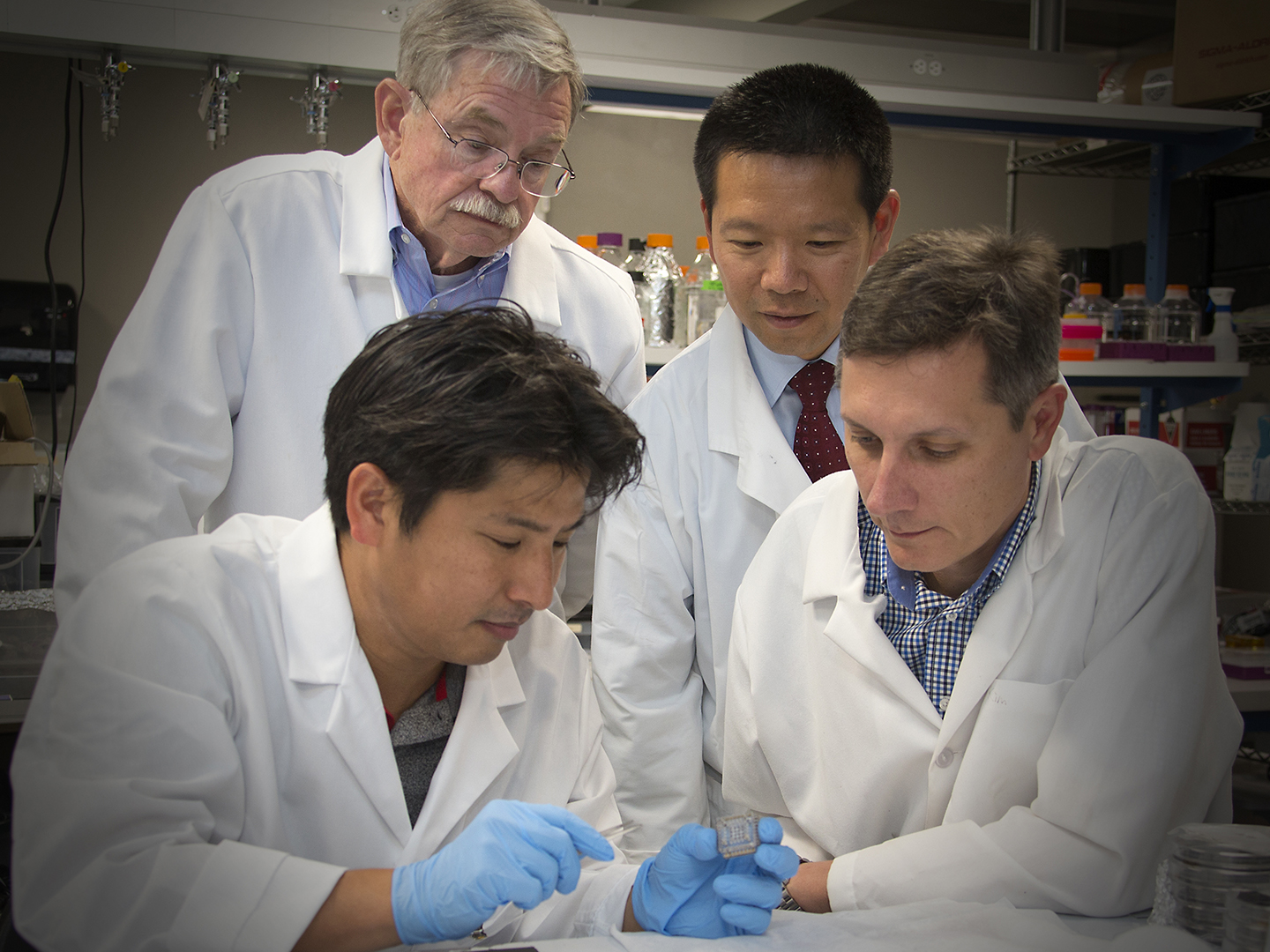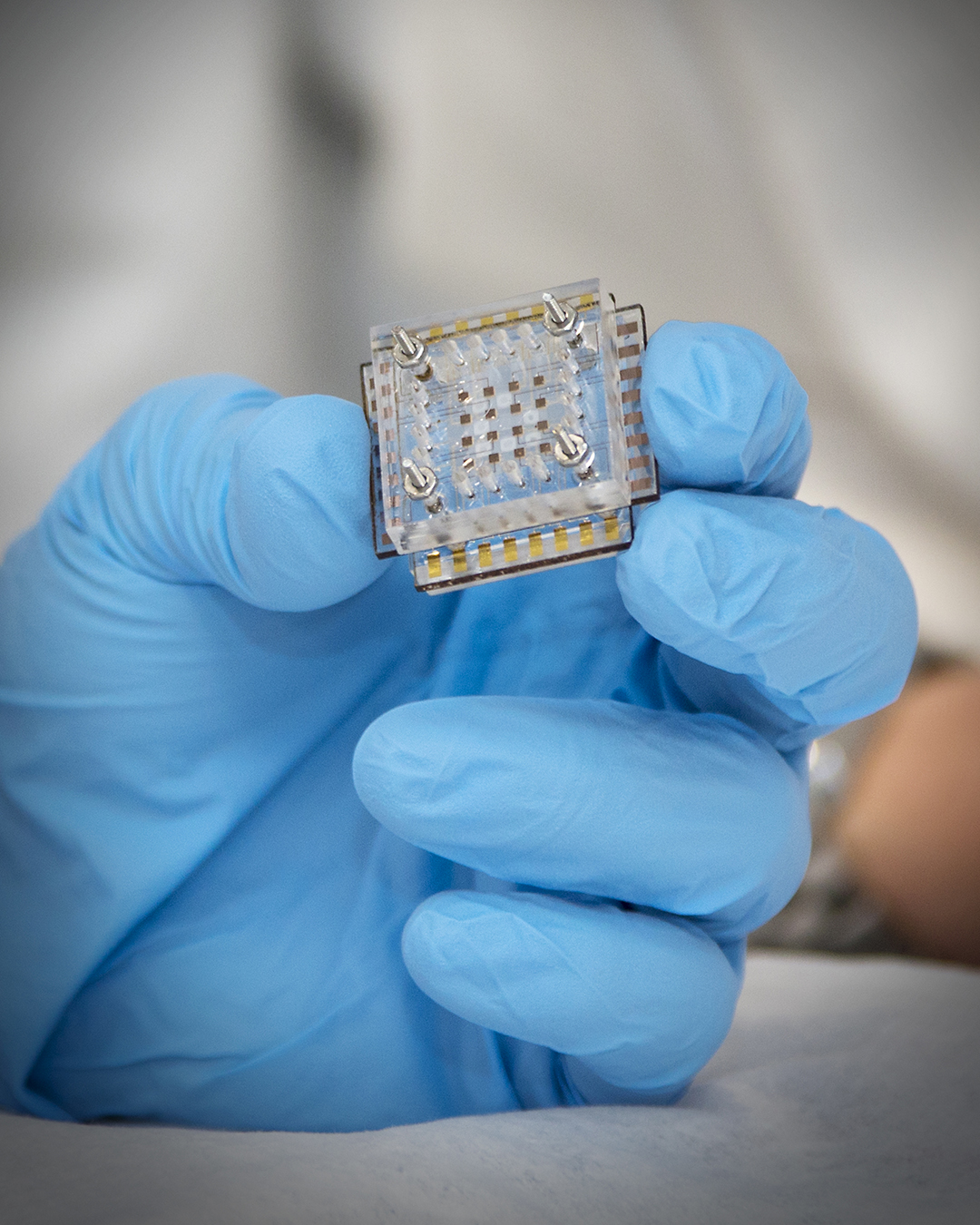Texas A&M Researchers Using Innovative Technology To Develop New Chemical Safety Testing Method
Story by Megan Myers, CVMBS Communications

Rusyn and Chiu, professors in the College of Veterinary Medicine & Biomedical Sciences’ (CVMBS) Department of Veterinary Integrative Biosciences (VIBS), received nearly $800,000 for the study “Integrating tissue chips, rapid untargeted analytical methods and molecular modeling for toxicokinetic screening of chemicals, their metabolites and mixtures.”
This three-year project aims to use biological, analytical, and modeling methods to improve upon current in vitro-to-in vivo extrapolation (IVIVE), a technique used in toxicology to determine how chemical exposures will impact an organism, for common industrial compounds and pesticides.
“The importance of this project is that it addresses a very acute need—to be able to extrapolate safe or unsafe concentrations of chemicals from experiments in cells to human oral, dermal, or inhalation exposures,” Rusyn said.
IVIVE, which involves taking data learned from in vitro studies (those done outside a biological context, or “test tube experiments”) and applying it to in vivo studies (those done on complete biological organisms), currently has numerous limitations. For example, researchers are typically forced to make many assumptions when converting in vitro data into applicable in vivo information.
By working with Dr. Erin Baker from North Carolina State University, the team aims to reduce the uncertainty of traditional IVIVE approaches by using tissue chips to generate toxicokinetic (the study of at what rate a chemical will enter the body and what happens to it once it is in the body) data and then refining that data with analytical and modeling methods.

“What we propose is really different from other current solutions because we propose to use rather complicated cell-based models, these so-called tissue chips,” Rusyn said. “We want to see if replacing the current simplistic models with more complicated, but also much more physiologically relevant, models would actually improve the confidence in the type of data that we get for this IVIVE.”
Because both Rusyn and Chiu lead the Tissue Chip Validation Center at Texas A&M University, this team is uniquely situated in the perfect environment for testing tissue chips that can represent multiple cell types, tissues, and organs, allowing them to simulate absorption, circulation, and excretion of chemicals in the body.
Once developed into a peer-reviewed publication, their research has the potential to be used by the EPA and other agencies as a new method for testing chemical safety.
“These types of projects not only benefit the agencies that fund them and general research but also have a major benefit for trainees,” Chiu said. “This research is very career empowering to our trainees, because they understand that this is not simply interesting research; it’s also research that has a potential to make an impact.”
Beginning this research during the COVID-19 pandemic has the potential to cause setbacks, but the researchers are determined to overcome any potential challenges and continue providing his trainees with the opportunity to contribute to the project.
“It’s very important for us that this university has a very clear set of rules as to how laboratory research is to be continued because a complete shutdown would be devastating, not just for our ability to do research, but also for our ability to make sure that our trainees are moving forward in their careers and getting their career goals accomplished,” Rusyn said. “I think that it’s great that the vice president of research (at Texas A&M) acted early on and decisively, and we’re looking forward to continue having very strong leadership on this campus.”
###
For more information about the Texas A&M College of Veterinary Medicine & Biomedical Sciences, please visit our website at vetmed.tamu.edu or join us on Facebook, Instagram, and Twitter.
Contact Information: Jennifer Gauntt, Director of CVM Communications, Texas A&M College of Veterinary Medicine & Biomedical Sciences; jgauntt@cvm.tamu.edu; 979-862-4216


